A Nutrition Coach Shares 5 Fat Loss Rules That Actually Work for Everyone
Are you ready to start losing weight but feel like you need a jumpstart? Brittney Blanco is a Macros Nutrition Coach and digital creator who regularly shares her weight loss and stay-fit tricks and tips with her followers. In a new social media post, she discusses a few easy ways to get started on your weight loss journey. "These five strategies are fundamental to jumpstarting and sustaining your fat loss journey," she writes in the caption of the Instagram video.
Prioritize Protein in Every Meal
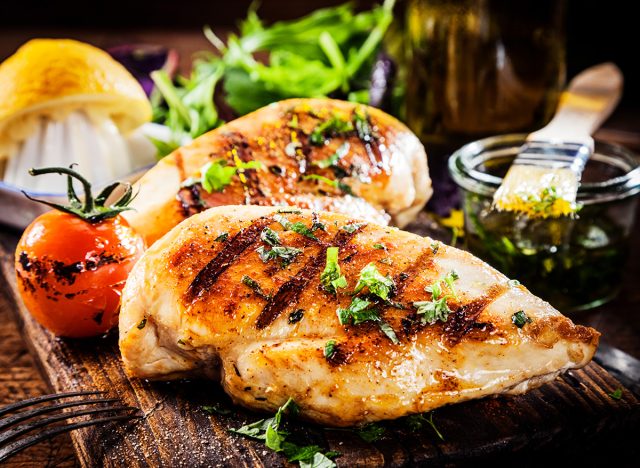
She recommends starting by making protein a priority. "Ensuring a high protein intake, around 175 grams daily, helps maintain muscle mass while in a calorie deficit. Protein supports muscle recovery, keeps you full, and aids fat loss without compromising strength," she says in her post.
Commit to Strength Training
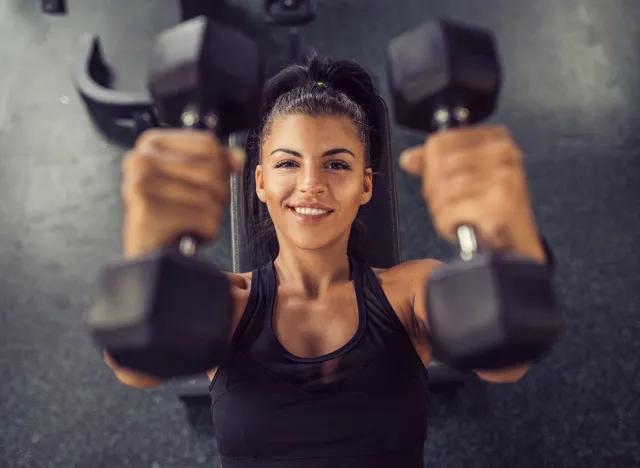
Next, she recommends committing to a strength training routine. "Lifting weights or doing resistance training at least four times a week is essential. Strength training preserves muscle, boosts metabolism, and helps shape your physique, all of which are critical to an effective fat loss program," she writes.
Get Quality Sleep

You also need to make sleep a priority. "Aim for 7-8 hours of restful sleep each night. Quality sleep is key to hormone balance, particularly cortisol and insulin, both of which play a significant role in fat loss and energy management," she writes.
Strive for Consistency

Next, focus on consistency rather than perfection. "Consistency in both diet and exercise routines is far more powerful than perfection. Building sustainable habits is what leads to lasting results, so keep moving forward even if things aren't always flawless," she writes.
Incorporate Daily Activity
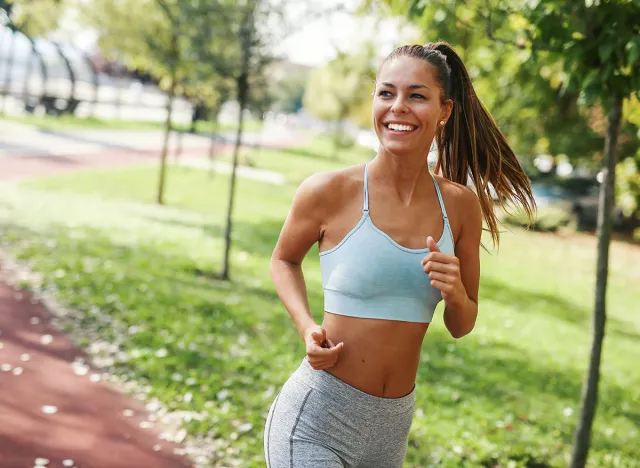
Incorporating daily activity is another essential habit. "Stay active throughout the day beyond formal workouts. Activities like walking, stretching, or standing regularly help keep your metabolism engaged and contribute to overall fat loss," she says.
Eat Protein-Packed Meals, Starting with This Egg Scramble
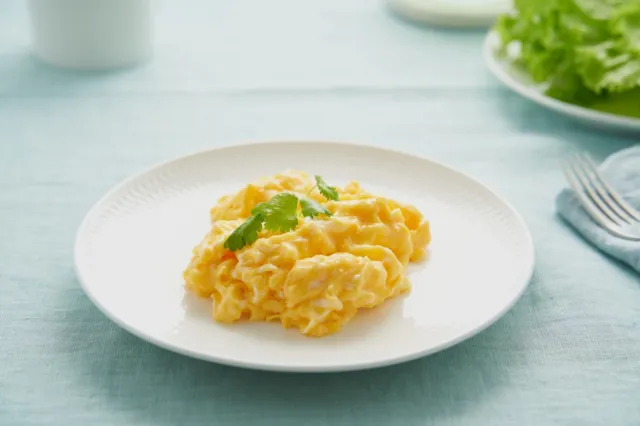
In another post, she reveals the meals she eats every day to "build lean muscle while burning fat, starting with a protein-packed scramble.
- Macros: 350 cal, 40g protein, 10g fat, 20g carbs.
- Ingredients: 1 cup egg whites, 1 whole egg, 1/4 cup diced bell peppers, 1/4 cup spinach, 1/4 avocado.
- Directions: Sauté veggies, then add eggs, scramble until cooked, and top with avocado.
RELATED: These 8 Common Salad Mistakes Leave You Starving an Hour Later
Grilled Chicken Salad
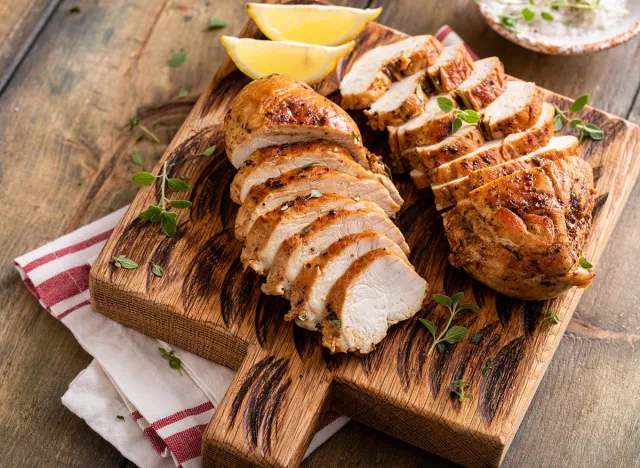
Her next go-to meal is a grilled chicken salad:
- Macros: 400 cal, 45g protein, 10g fat, 30g carbs.
- Ingredients: 4 oz grilled chicken breast, 2 cups mixed greens, 1/4 cup cherry tomatoes, 1/2 cup cucumber, 1 tbsp balsamic vinegar.
- Directions: Toss all ingredients and top with grilled chicken. Drizzle balsamic vinegar for flavor.
Protein Smoothie
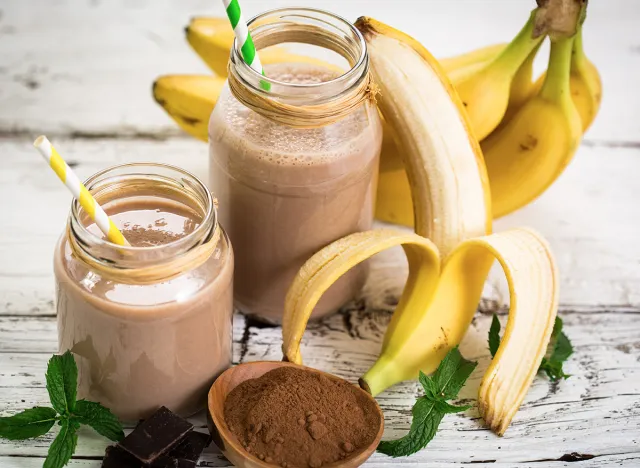
Her third meal is a protein smoothie:
- Macros: 300 cal, 30g protein, 5g fat, 40g carbs.
- Ingredients: 1 scoop whey protein, 1/2 banana, 1/2 cup blueberries, 1 cup almond milk, Handful of ice.
- Directions: Blend all ingredients until smooth and creamy!
Taco Bowl

For dinner, her fourth meal, she makes a taco bowl:
- Macros: 550 cal, 55g protein, 15g fat, 40g carbs
- Ingredients: 6 oz ground turkey (93% lean), 1/2 cup cauliflower rice, 1/4 cup black beans, 1/4 cup diced tomatoes, 1/4 cup shredded lettuce, 2 tbsp salsa, Salt, pepper, cumin, and chili powder to taste
- Directions: Season and cook turkey, then layer with cauliflower rice, beans, and veggies. Top with salsa!
RELATED: Woman Gets 12,000 Steps Daily With Her Desk Job Using These Simple Hacks
Meal Prep
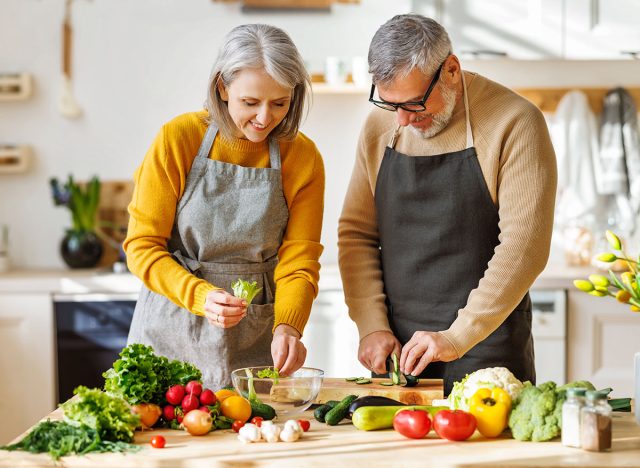
Don't use time as an excuse to eat unhealthy meals. She offers a final tip to cook ahead. "Prep these meals in advance to stay on track and crush your goals!" she writes. And if you enjoyed this article, take advantage of these 15 Quick Ways to Lose Body Fat Percentage in a Week.





